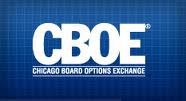 The CBOE became the very first options exchange in North America when it was created in 1973. During its opening day on the 26th of April, nearly 1,000 contracts were executed based on over 15 different assets. In 1983, the CBOE revolutionized the industry by enabling major indices, such as the Dow Jones Industrial Average, to act as underlying securities for options. The board achieved this objective by launching the CBOE-100 on 11th March. Option index trading was then extended to include the S&P 500 three months later.
The CBOE became the very first options exchange in North America when it was created in 1973. During its opening day on the 26th of April, nearly 1,000 contracts were executed based on over 15 different assets. In 1983, the CBOE revolutionized the industry by enabling major indices, such as the Dow Jones Industrial Average, to act as underlying securities for options. The board achieved this objective by launching the CBOE-100 on 11th March. Option index trading was then extended to include the S&P 500 three months later.
The CBOE founded its now revered Options Institute during 1985 with the primary mission of instructing investors about options trading on a global basis. The board’s next important project was revealed in 1993 when it launched its Volatility Index which was specifically designed to register short-term volatility utilizing S&P option prices. A further volatility index was introduced to the markets in 2001 but this time was constructed using the Nasdaq 100. For its excellent contributions to options trading over its lifetime, the CBOE received major international awards in 2006. The CBOE launched the new concepts of binary options on 1st July 2008 and its trading volume exceeded 1billion annual contracts later that year.
Even today, the Chicago Board Options Exchange still remains the biggest options exchange in America and is credited with being the father of listed options. The board is the primary innovator in this business by leading the fields of investor education, product innovation and technological advances. The CBOE possesses numerous patented tools including the CBOE Volatility and the S&P 500 options indices. The board has also introduced many other revolutionary products over the years, such as security index and equity options.
In particular, the CBOE is renowned for facilitating the trading of cash-settled options utilizing almost 40 different indices. These products enable traders to execute positions based on entire market sectors or just specific ones. Essentially, index options are created using underlying assets which are not based on the shares of firms but on a dollar value equating to the index value times one hundred dollars.

